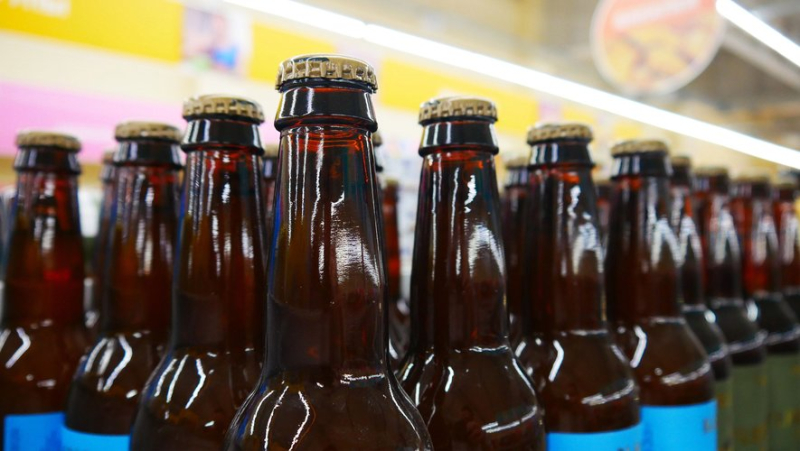Return of the glass deposit: a price “depending on the format”, “around 20 or 30 cents” per container

Overall, the reuse of packaging is currently estimated at less than 1%, with very strong disparities depending on the sector, with daily consumption being the weak link. Stockah/Getty Images
The amount of the deposit recovered by consumers who return their glass packaging in the four regions where this practice will be tested from spring 2025 will amount to “around 20 or 30 cents” per bottle or jar, according to the eco-organization Citeo.
If the amount remains to be defined precisely, “we will be around 20 or 30 cents”, assured Jean Hornain, CEO of Citeo, during a two-voice interview with Célia Rennesson, director of the Vrac et Réemploi network, published Tuesday in the newspaper Ouest-France.
A price “depending on the format”
This amount, recoverable by the consumer, will therefore have an effect on the purchase price of the products, “while the question of purchasing power is central”, acknowledges Mr. Hornain, who wishes to “avoid the dissuasive effect”, for example by “advancing”the first instructions to consumers. The price could be different “depending on the format” of the container, specifies Mr. Hornain.
The challenge, recalls Citeo, is colossal: to achieve 10% of reused packaging by 2027, in accordance with the Agec law on the circular economy of February 2020. Overall, the reuse of packaging is currently estimated at less than 1%, according to Célia Rennesson, with very strong disparities depending on the sector, with daily consumption being the weak link.
The large-scale experiment, which concerns 16 million French from four large regions of northwestern France (Pays de la Loire, Brittany, Normandy, Hauts-de-France), had been announced by Citeo at the beginning of July. The eco-organization hopes in the long term for a "generalization"at the national level.
Citeo is financed by packaging producers to financially support local authorities and organize collection in the yellow bin throughout the national territory and the recycling of waste. Production of these packages is scheduled to begin in October 2024, according to Citeo, which is counting on the installation of collection devices in stores from March 2025, before marketing in May.
The first packages available will be one-litre wide-neck bottles, containing fruit juices and soups, before the large 75 cl amber bottles, particularly for beer, then jars of preserves, compotes and fromage blanc, before the 33 centilitre amber bottles, Mr Hornain said.
In addition to the environmental impact, this initiative, developed with the support of the Brasseurs de France union, was facilitated by the surge in glass prices last year during the energy crisis.
However, the deposit “reduces the cost price of the glass bottle since it is used many times”, underlines Ms. Rennesson, according to whom the reuse of glass bottles saves 75% of energy, 50% of water and 79% of CO2.




